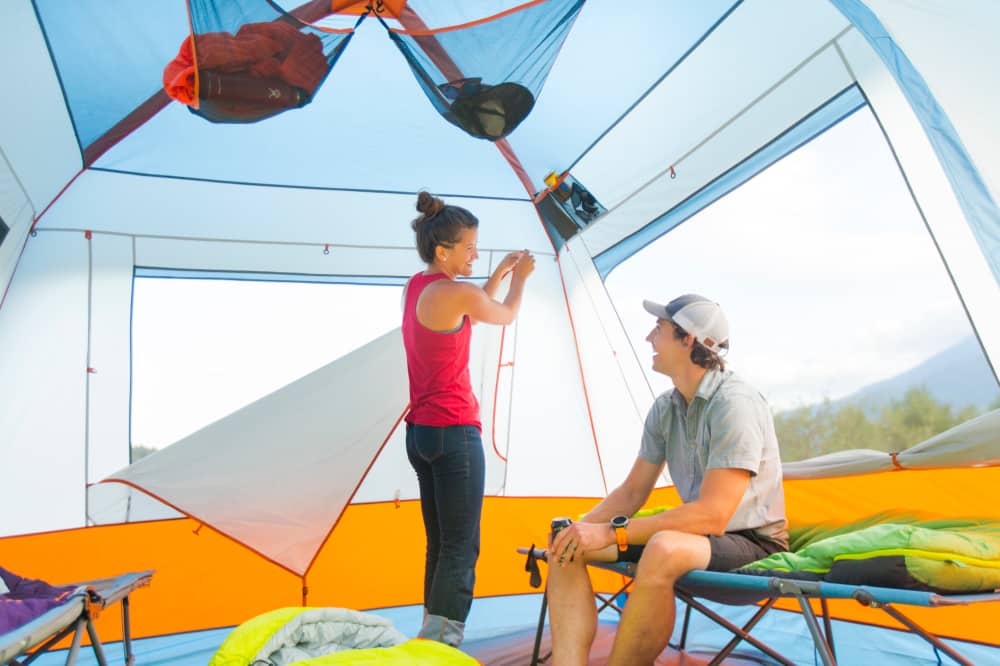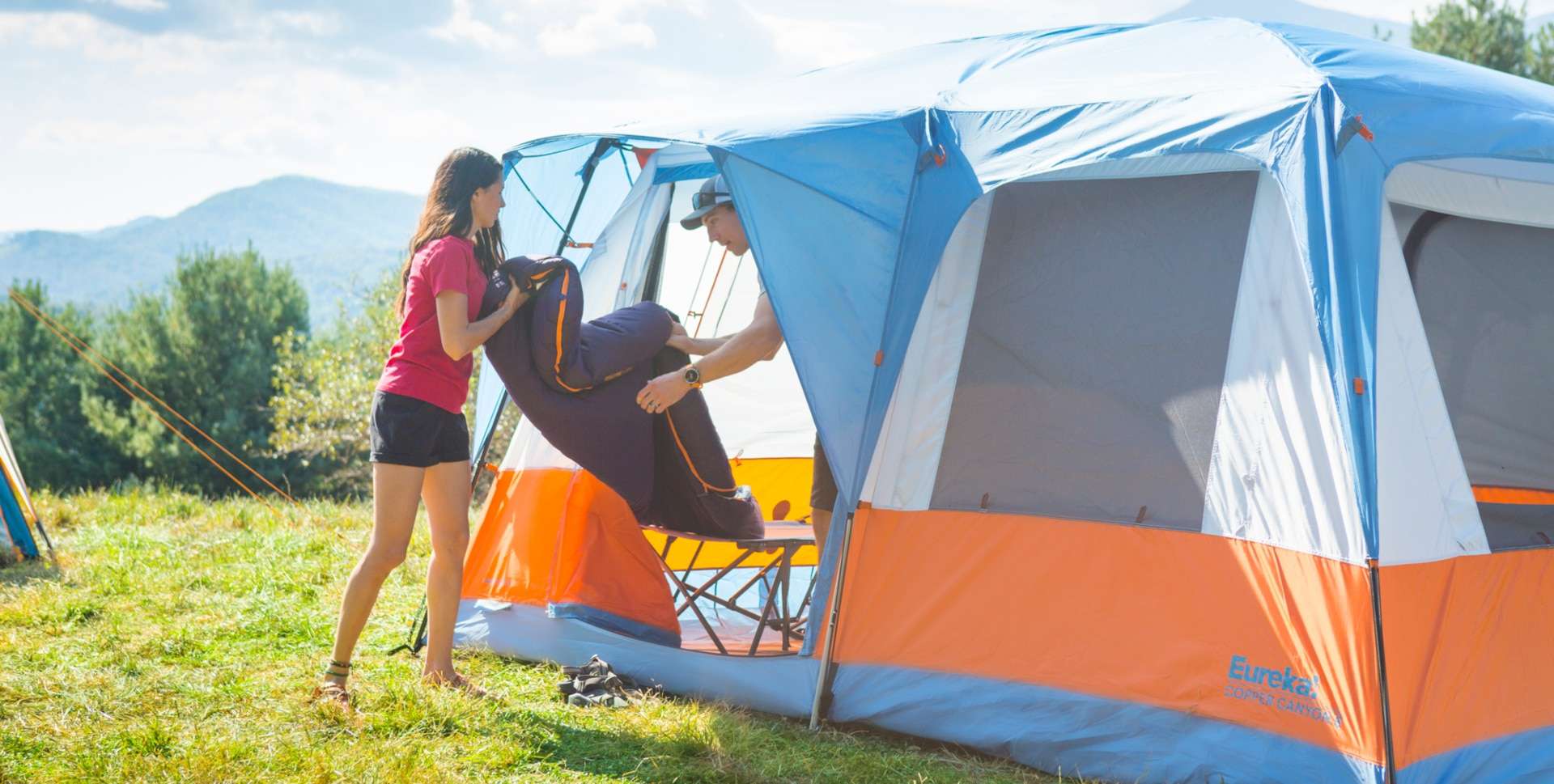Going on a car camping trip with a few family and friends in some nice weather – but don’t know what to sleep in?
The cabin tent may be the one for you. In this article, we’ll go over why you should consider a cabin tent for your family camping trip and go over some common advantages and disadvantages of cabin tents in general.
Pros and cons of cabin tents (quick guide)
If you’re going camping with your family or a bunch of friends and the weather’s looking decent, cabin tents are a great choice. They’re very spacious, come with loads of family friendly features and don’t necessarily have to cost you the earth.
Pros of cabin tents
- Family friendly features
- Lots of space makes cabin tents very comfortable for families
- Use of instant-style poles makes for easy setup
Cons of cabin tents
- Poor performance in inclement weather
- Materials used are less durable than tents designed for backpacking
- Very heavy
Advantages of cabin tents
Lots of space makes cabin tents very comfortable for families
The large windows and doors (which let in plenty of natural light) that you’ll find in cabin tents make them feel spacious and airy – great for families to spread out in!
The vertical walls and high ceilings (the Eureka Canyon LX models are often over 7 feet high!) you’ll find in cabin tents make for a particularly comfortable place to hang around in – especially if your summer camping trip does start to see some unexpected showers. Time to get out those board games, friends.

Typically instant type tents means easier setup
Cabin tents often come in an “instant tent” type (i.e. tents that come with pre-attached poles).
This means that instead of having to spend a good while looping tent poles through the tent – you’ll just have to extend the pre-attached poles – and then you’ll find that your tent’s already up. Time to begin relaxing.
As instant cabin tents are very quick and very easy to set up, they’re perfect for the casual camper who finds loads of tent poles and guy lines somewhat tedious (don’t worry, we all do). Be aware, though, that as some cabin tents are very large, they may still require multiple people to set up – even if they’re billed as “instant” tents.
Disadvantages of cabin tents
Poor performance in wind and rain
Cabin tents perform poorly in bad weather thanks to their vertical walls. As such, we don’t recommend you use cabin tents in very windy weather or heavy rain – they may not be able to withstand strong gusts.
If you’re expecting strong winds, you’d probably be better off considering a dome style tent instead. Though they’re not as family-friendly, they’ll perform much better against the elements thanks to their more aerodynamic shape.
Additionally, as most cabin tents only come with a partially covering rainfly ,they’re fine for summer camping – but really problematic when heavy rain starts falling from all directions.
As such, you’ll see most cabin tents labeled as “Two Season” shelters (camping code, essentially, to say that the tent in question is only designed for fair-weather camping).
Cabin tents are often not made of very durable materials
Cabin tents are often made of cheaper materials like polyester for the main body of the tent and fiberglass for the tent’s poles. Fiberglass tent poles are not as durable as aluminum tent poles – but they’re still strong enough to handle fair weather. For more help on choosing tent pole materials, check out our article on Aluminum vs Fiberglass Tent Poles.
Build quality on some of these tents can also be an issue, given that they’re low cost. Fiberglass poles can break, for example, potentially leaving your shelter a little more saggy than it should be – and if your tent is indeed an instant tent with pre-attached tent poles, it may be tricky or borderline impossible to replace the poles in case of breakage.
To help avoid these issues, check out some online reviews of cabin tents beforehand to help you make the right choice (we’re big fans of the Crua Tri).
Quite heavy and poor for portability
Cabin tents are typically very heavy and not as portable as other types of tents. This makes cabin tents essentially impossible to carry into the backcountry – so if you’re looking for a shelter with which to do just that, a cabin tent isn’t for you.
As cabin tents are mostly designed for car camping, this shouldn’t be too much of an issue. If you’re purchasing a large cabin tent, though, check its packed size before you buy to make sure it’s going to fit in your car along with the rest of what you’re bringing camping (i.e. your family).
Next up: Trying to pick between a cabin tent and a dome tent? Check out our guide to cabin tent vs dome tents.
Previous: If it’s still not clear, let’s go back to the basics. What is a cabin tent?
